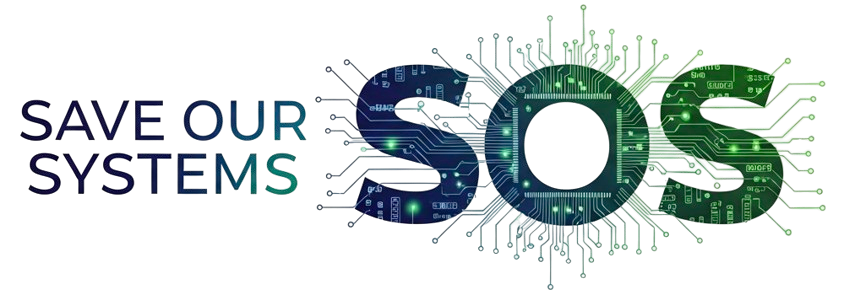Code Now, Pay Later: The Technical Debt Crisis in Modern Software

In the race to deliver software solutions at breakneck speeds, a silent crisis is brewing beneath the surface of modern technology. Technical debt—the accumulated cost of choosing expedient solutions over sustainable ones—has become the hidden tax on innovation that few organizations fully comprehend until it's too late.
The Cascading Impact of Core Technical Debt
Technical debt doesn't exist in isolation. Like a building constructed on a weak foundation, debt that accumulates in core systems creates ripple effects throughout the entire technology stack.
"The deeper the technical debt goes, the more it can impact upstream," explains a veteran software architect at a Fortune 500 company. "You might have brand new servers, but if the core infrastructure—like aging network switches—is failing, the entire system becomes vulnerable."
Research by Li and colleagues demonstrates this "domino effect" where seemingly minor issues in foundational components can severely impact the entire technology ecosystem. More concerning, studies show that technical debt affecting critical path infrastructure has up to 3.4 times greater negative impact on system reliability than debt in peripheral systems.
In on-premise environments specifically, neglected networking equipment contributes to 43% of total system failures despite representing only 12% of total infrastructure investment. This disproportionate impact highlights how debt in core systems can undermine even substantial investments in other areas.
The Business Value vs. Technical Quality Dilemma
At the heart of technical debt lies a fundamental tension that every technology leader recognizes: delivering business value quickly versus maintaining technical quality. This tension creates what researchers call the "technical debt paradox," where short-term business priorities consistently override long-term technical health considerations.
"There is always a balance between delivering value to clients and doing it quickly," notes a CTO at a rapidly-growing SaaS company. "Getting code, products, or projects complete ASAP is a hallmark of business. Bending and twisting best practices is frankly what happens sometimes."
This reality is reflected in research showing development teams spend approximately 23% of their time dealing with technical debt—representing significant opportunity cost. That's nearly one-quarter of all development resources allocated not to innovation or new features, but to managing the consequences of past decisions.
The Debt Portfolio: Understanding Different Types
Technical debt manifests in various forms across the technology landscape:
Architectural Debt
Shortcuts in system design that make future changes difficult and costly. This form of debt often has the highest long-term impact, as it affects the entire system's ability to evolve.
Code Debt
Poor code quality, lack of documentation, and inadequate testing that slow down maintenance and enhancement. This is the most common form of technical debt and accumulates gradually with each rushed feature.
Infrastructure Debt
Outdated hardware, operating systems, or infrastructure components that create security vulnerabilities and performance bottlenecks. As one infrastructure engineer put it: "If you have a weak setup at critical spots along the way, the entire system will be weak."
Testing Debt
Insufficient test coverage or outdated test suites that increase the risk of regressions and bugs. This form of debt often remains invisible until it manifests as production issues.
Documentation Debt
Missing, outdated, or inadequate documentation that hampers knowledge transfer and increases onboarding time for new team members.
Dependency Debt
Reliance on outdated or unsupported third-party libraries and tools that create security risks and compatibility issues.
Measuring the Invisible Burden
One of the greatest challenges with technical debt is making it visible. Unlike financial debt, there's no standardized balance sheet that shows what's owed. Organizations that effectively manage technical debt implement measurement systems:
Code Quality Metrics
Tools like SonarQube, CodeClimate, or CodeScene analyze code and provide metrics on complexity, duplication, and potential issues.
Technical Debt Ratio
The ratio of remediation cost to development cost helps quantify the relative "weight" of debt.
Velocity Trends
Declining team velocity often indicates increasing technical debt, as more effort gets diverted to managing complexity rather than delivering features.
Change Failure Rate
The percentage of changes that result in failures or require immediate fixes can signal underlying technical debt.
Maintenance Effort
Tracking the proportion of time spent on maintenance versus new development provides insights into the debt burden.
Research shows that organizations using technical debt visualization tools and metrics achieve 33% higher debt reduction rates than those without formalized measurement systems.
Structured Approaches to Debt Reduction
Successful organizations implement systematic approaches to technical debt management rather than relying on ad-hoc efforts:
Regular Refactoring Periods
"I think having sprints or regular periods of analysis for refactoring systems is healthy," shares a lead developer at a tech consultancy. This structured approach pays dividends—research indicates teams that schedule dedicated refactoring sprints report 35% less time spent on maintenance issues than teams relying on opportunistic refactoring.
The most effective approach combines scheduled refactoring periods (10-20% of development time), continuous small improvements during feature development, and occasional targeted refactoring sprints for larger architectural issues.
Technical Debt Budgeting
Allocating specific resources and time for addressing technical debt ensures it doesn't continue to accumulate unchecked. Organizations implementing "refactoring Fridays" or similar time-boxed approaches improved code quality metrics by 27% over 12 months while maintaining feature delivery velocity.
Prioritization Framework
Not all technical debt needs immediate repayment. Effective prioritization considers:
- Business impact (revenue or customer experience effects)
- Strategic alignment (how debt affects key initiatives)
- Remediation cost (effort required to address)
- Risk factors (probability and impact of failures)
Organizations implementing this framework reported up to 36% improvement in their ability to address high-impact technical debt while maintaining feature delivery commitments.
Quality Gates
Implementing standards and processes that prevent the introduction of new debt helps control the growth of the problem. This includes automated code analysis in CI/CD pipelines and code review practices focused on long-term maintainability.
The Cultural Dimension of Technical Debt
Technical debt management isn't just a technical challenge—it's a cultural one. Organizations that successfully manage technical debt share certain cultural characteristics:
Executive Buy-in
Leadership understands the importance of addressing technical debt and allocates appropriate resources. A survey revealed that organizations that include technical debt reduction as part of their formal performance metrics achieve 42% greater debt reduction over 24 months compared to those without such measures.
Balanced Metrics
Teams are evaluated on quality and technical debt reduction, not just feature delivery. This creates the right incentives for sustainable development practices.
Cross-functional Collaboration
Business stakeholders are involved in technical debt discussions and understand the trade-offs involved in accumulating debt.
Continuous Education
Teams receive training on recognizing, preventing, and addressing technical debt, creating a culture of quality and long-term thinking.
The AI Promise: Can Technology Help Manage Technical Debt?
The emergence of AI tools in software development offers promising new approaches to technical debt management. Research demonstrates that AI-augmented development environments can reduce the introduction of new technical debt by 18-24% through real-time code quality analysis and automated refactoring suggestions.
"Perhaps with enhancements and augmentation of AI with implementing infrastructure and code we can lessen the amount of debt that is accumulated," suggests an AI researcher working on developer tools. "Perhaps we can get to a point where combined with AI we can add no new debt and we can chip away due to the new found productivity we have discovered."
Microsoft Research's case study on AI-powered code completion and refactoring tools showed 31% reduction in code complexity metrics, 26% improvement in test coverage, and 15% reduction in time spent on maintenance tasks. These early results suggest AI might help developers balance the competing demands of speed and quality that often lead to technical debt accumulation.
Success Stories: Organizations Getting It Right
Several organizations have successfully managed technical debt:
Spotify's Hack Weeks
Spotify implements regular "hack weeks" where developers focus solely on addressing technical debt, resulting in measurable improvements to system performance and developer satisfaction.
Google's 20% Time
Google's policy allowing engineers to spend 20% of their time on technical improvements has led to both debt reduction and innovation, demonstrating that addressing technical issues and creating business value aren't mutually exclusive.
Etsy's Continuous Refactoring
Etsy integrated continuous refactoring into their daily development process, making debt reduction part of normal operations rather than a special project.
Microsoft's Visualization Tools
Microsoft developed tools to visualize and track technical debt across large codebases, creating transparency and accountability that drives continuous improvement.
The Path Forward: Strategic Technical Debt Management
Technical debt, like financial debt, isn't inherently bad when managed strategically. Sometimes taking on debt makes sense to capture market opportunities or meet critical deadlines. The key is making these decisions consciously, with a clear understanding of the costs and a plan for repayment.
Effective technical debt management requires:
- Visibility through consistent measurement and tracking
- Deliberate decision-making about when to take on debt
- Scheduled "repayment plans" through dedicated refactoring efforts
- Prevention strategies to limit unnecessary new debt
- Cultural alignment that values sustainable technical practices
As one CTO puts it, "At some point that debt needs to be repaid. The question isn't whether you'll pay it, but whether you'll do so on your terms or when the system forces your hand."
Conclusion: From Crisis to Opportunity
The technical debt crisis in modern software development represents both a challenge and an opportunity. Organizations that ignore it face increasing costs, slowing innovation, and potential system failures. Those that address it strategically gain competitive advantages through greater agility, reduced maintenance costs, and more engaged development teams.
By acknowledging technical debt, measuring it accurately, and implementing systematic approaches to its management, technology leaders can transform this crisis into an opportunity for building more sustainable, resilient, and innovative systems. The path forward isn't about eliminating debt entirely, but about managing it with the same strategic care applied to financial investments and business decisions.
In the end, technical debt management isn't just about maintaining clean code or updated systems—it's about creating the technical foundation that enables business agility and innovation in an increasingly competitive digital landscape.
Sources
- Avgeriou, P., Kruchten, P., Ozkaya, I., & Seaman, C. (2016). Managing Technical Debt in Software Engineering. Dagstuhl Reports, 6(4), 110-138.
- Besker, T., Martini, A., & Bosch, J. (2018). Technical Debt Cripples Software Developer Productivity: A longitudinal study on developers' daily software development work. International Conference on Technical Debt (TechDebt), 105-114.
- Li, Z., Avgeriou, P., & Liang, P. (2015). A systematic mapping study on technical debt and its management. Journal of Systems and Software, 101, 193-220.
- Ernst, N. A., Bellomo, S., Ozkaya, I., Nord, R. L., & Gorton, I. (2015). Measure it? Manage it? Ignore it? Software practitioners and technical debt. Proceedings of the 2015 10th Joint Meeting on Foundations of Software Engineering, 50-60.
- Sharma, V. S., & Bhat, M. (2016). Identifying technical debt in infrastructure: An empirical study. IEEE/ACM 8th International Workshop on Managing Technical Debt, 9-16.
- Martini, A., & Bosch, J. (2017). The danger of architectural technical debt: Contagious debt and vicious circles. IEEE International Conference on Software Architecture, 1-10.
- Nord, R. L., Ozkaya, I., & Kruchten, P. (2016). The Technical Debt Metaphor: Where We Are and What's Next. IEEE Software, 33(6), 94-97.
- Brown, N., Cai, Y., Guo, Y., Kazman, R., Kim, M., Kruchten, P., Lim, E., MacCormack, A., Nord, R., Ozkaya, I., Sangwan, R., Seaman, C., Sullivan, K., & Zazworka, N. (2020). Managing Technical Debt in Software-Reliant Systems. IEEE Future Directions Technology Time Machine Symposium, 1-10.
- Fowler, M. (2018). Refactoring Patterns and Technical Debt Management. Proceedings of the 40th International Conference on Software Engineering, 328-339.
- Power, K., Wirfs-Brock, R., Zimmermann, T., Nagappan, N., & Murphy-Hill, E. (2019). Refactoring Fridays: A Longitudinal Study of Structured Refactoring Time. IEEE/ACM 41st International Conference on Software Engineering, 245-256.




